A chirping smoke alarm can drive anyone crazy. What’s worse, it is an indication that your alarm isn’t working properly, posing a risk to you, your family, and everyone inside your house.
But don’t worry, this guide will suggest useful troubleshooting steps to deal with the annoying smoke detector beeping issue. It’s time to fix all the potential issues, make your alarm work properly again, and keep you safe.
Let’s dive in!
Smoke Detector Beeping or Chirping
Smoke detectors beep due to various environmental or technical reasons. Sometimes, this chirping is normal and signals that the device is receiving fresh power. But usually, a chirping or beeping alarm means that there are problems with the battery. Ensure that your smoke alarm has batteries inserted correctly. Try other troubleshooting to fix chirping smoke detectors.
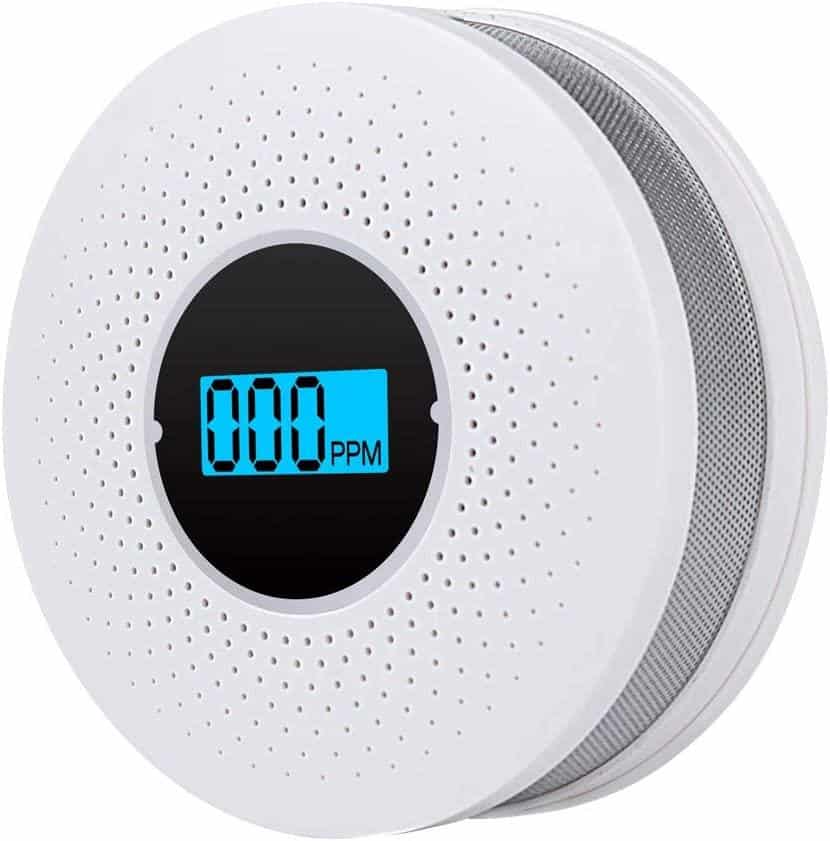
Why is my smoke alarm chirping?
Smoke detectors literally save lives, and it’s recommended to install them in all rooms and on each floor of your home. You should install the device high up on the wall or on the ceiling to minimize false alarms.
But often, due to some malfunction, a beeping smoke detector is a common issue faced by many users. If your smoke detector is showcasing the same problem, it’s crucial to diagnose the root cause and resolve it instantly to keep protecting you and your family.
This section is focused on the potential reasons why your alarm is continuously beeping.
Issue with batteries
Sometimes, your batteries might not be fresh. If you keep the batteries in a cold place, they will not lose their charge any less quickly than if you stored them at room temperature (this is a common myth). Make sure to check out the freshness date mentioned on the package while buying new batteries.
But there are many other battery-related culprits, which we will discuss below.
Low batteries
When the batteries in a smoke detector are weak, it will beep once per minute to remind you about replacement. This is a safety net as it offers the home’s occupants a warning that the battery is weak.
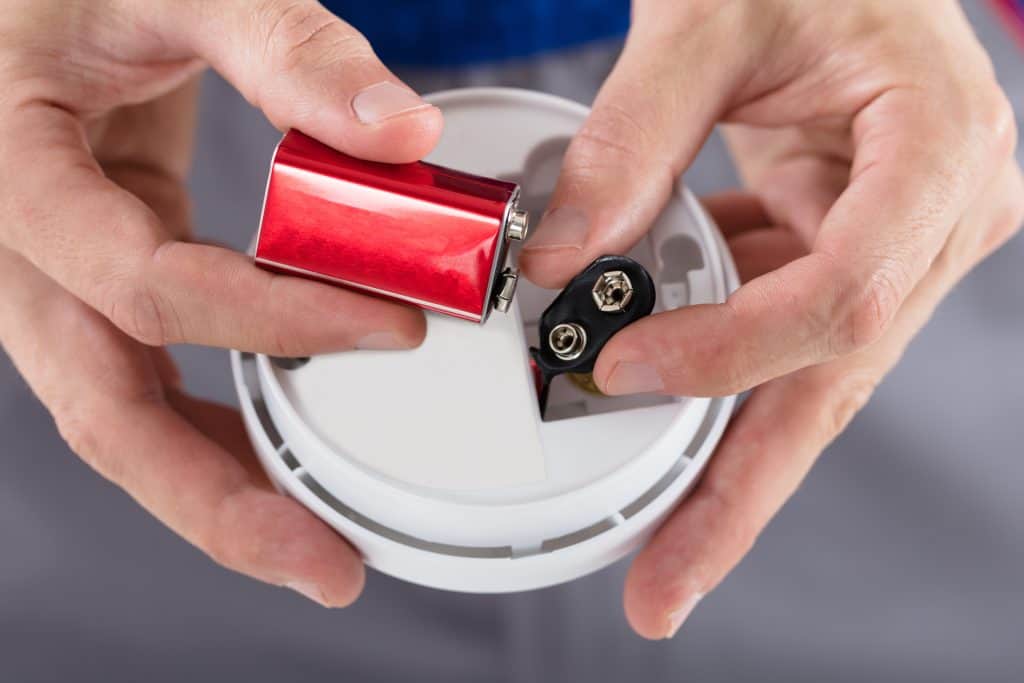
Remember that even on low batteries, the unit will operate properly for 30 days. The device will notify you about battery replacement long before the unit leaves the home unprotected.
But electronics can do weird things when the batteries are weak. Remember that in the case of low batteries, the affected smoke detector will chirp. But the other interconnected alarms will remain quiet.
Residual charge from previous batteries
If your detector continues to beep after replacing the batteries, it means you need to clear the residual charge.
This charge enables the chirping to continue even when the battery is dead and replaced. In this scenario, you need to reset the device.
Batteries installed incorrectly
Are your batteries inserted correctly? Sometimes, the problem doesn’t lie in the battery but the way it is placed. Ensure that the positive and negative terminals of the batteries align with the correct terminals of the smoke detector.
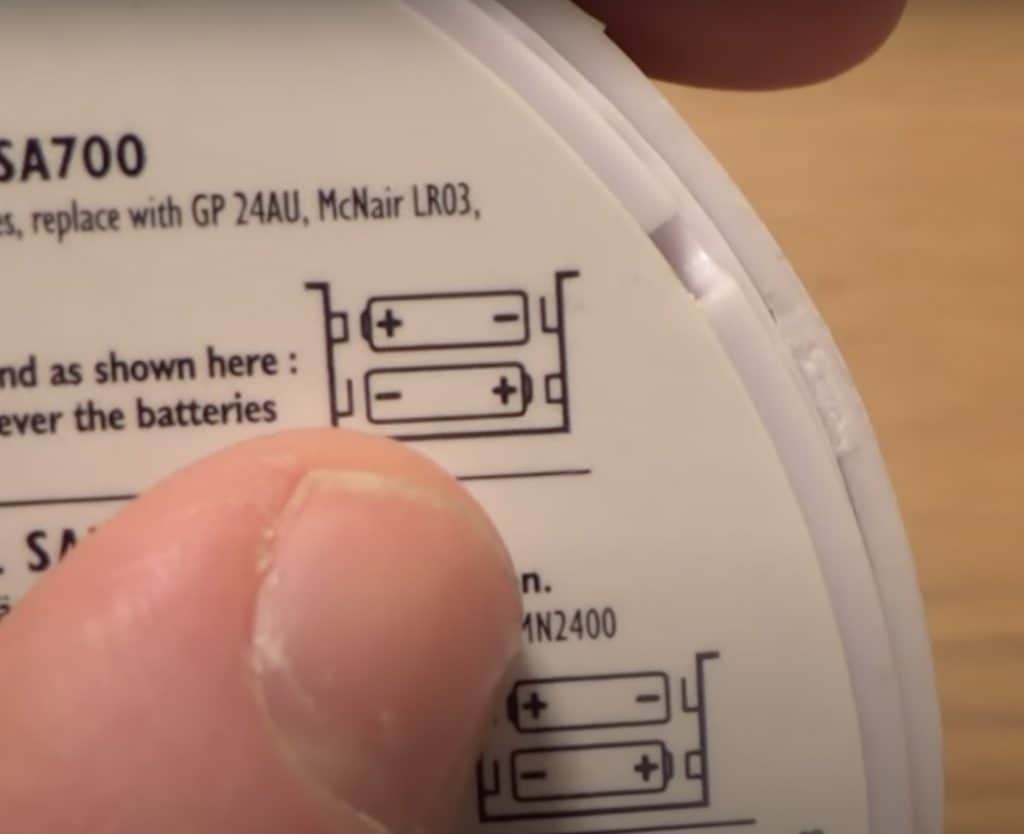
Battery terminal is obstructed
Sometimes, when the battery is inserted, part of the terminal is obstructed. In this case, the battery won’t be able to make contact with the alarm terminals. So, check to make sure that the battery pull-tab or any other hindrance is removed.
Battery cover is open
Some hardwired smoke detectors encase a backup battery in a tiny drawer. While replacing the battery, ensure that it fits right inside the slot and the drawer is totally closed. If it’s not closed tightly, the battery won’t be able to interact with the terminals.
Likewise, on other models, ensure that the device’s lid is closed and that it’s properly positioned before placing it again on the ceiling.
Ensure that the battery cover is completely closed in order for the battery to make contact with the terminals.
Battery pull tab is still in the alarm
This is another one of the many battery-related culprits behind a smoke detector beeping. The battery pull-tab is supposed to be discarded when AC power is offered to the unit.
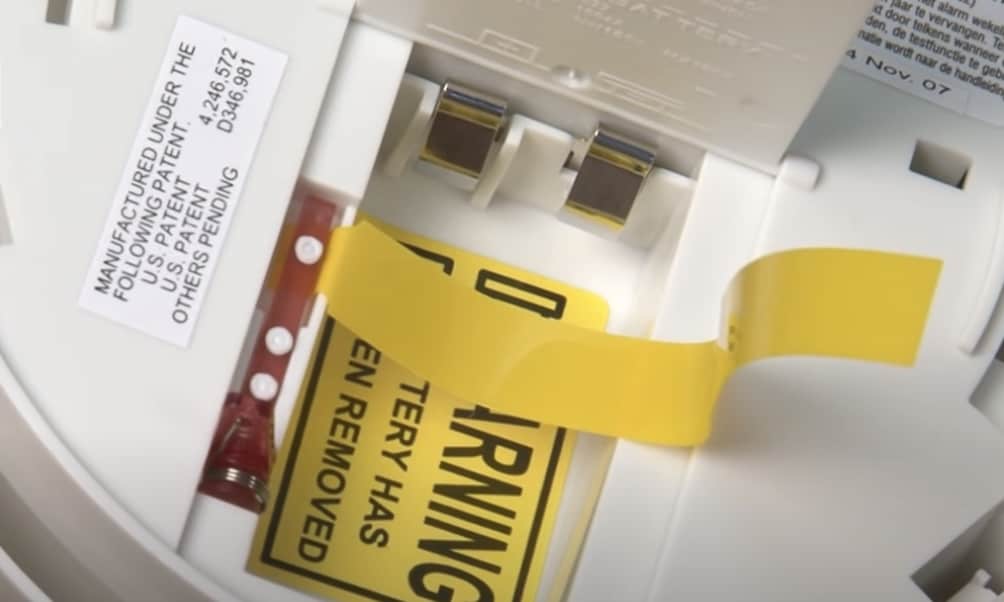
Dust or dirt in the sensor chamber
With time, dirt or dust can accumulate in the sensor chamber or in any other compartment, leading to a malfunction.
Tripped circuit breaker
A tripped circuit breaker can usually cause a 110-volt hardwired smoke alarm to chirp. It will continue to beep and operate on the backup battery until AC power is restored.
In this case, check the breakers in the panel box. If any one of those has tripped, reset it. If the same breaker trips again, replace it.
Faulty alarm
A faulty alarm means that your unit is permanently damaged and requires a complete replacement. If you’re considering investing in a unit, read our review of this excellent smoke and carbon monoxide detector: X-Sense Smoke & Carbon Monoxide Detector SC07-W Review
Environmental factors
Aside from the technical causes, environmental factors also play a significant role in the malfunctioning of the smoke detector. Some of these environmental factors are discussed below.
Sunlight
Sunlight can influence photoelectric smoke alarms as these units have light beams inside. The light sensors are activated when too many airborne particles enter the unit, which can also result in less light falling on the sensor, if it detects smoke.
The theory behind sunlight activating smoke detectors operates on the same principle. But instead of the light being blocked by the particles, flooding the unit with light can make the light beam difficult to distinguish for the sensor. This usually happens with wall-mounted devices in front of West or East-facing windows.
Humidity
Many times, the reason behind a beeping smoke detector can be high temperature, airflow issues, or humidity. It’s possible that you placed the detector too close to the ceiling fan, HVAC vent, or an open window. These conditions can make the device act up.
HVAC vent
This component can get dirty with time, leading to debris affecting the sensors. Make sure to use compressed air, a microfiber cloth, or a vacuum cleaner to keep a tidy HVAC vent.
Bugs
Similar to dust, bugs can build up in the smoke detector. So, clean the unit just how you clean accumulated dust. The insects can block many electronics, including your smoke detector.
Overloaded circuit
Never overload electrical circuits and outlets. Overloaded circuits that deliver power to different outlets can lead to fires.
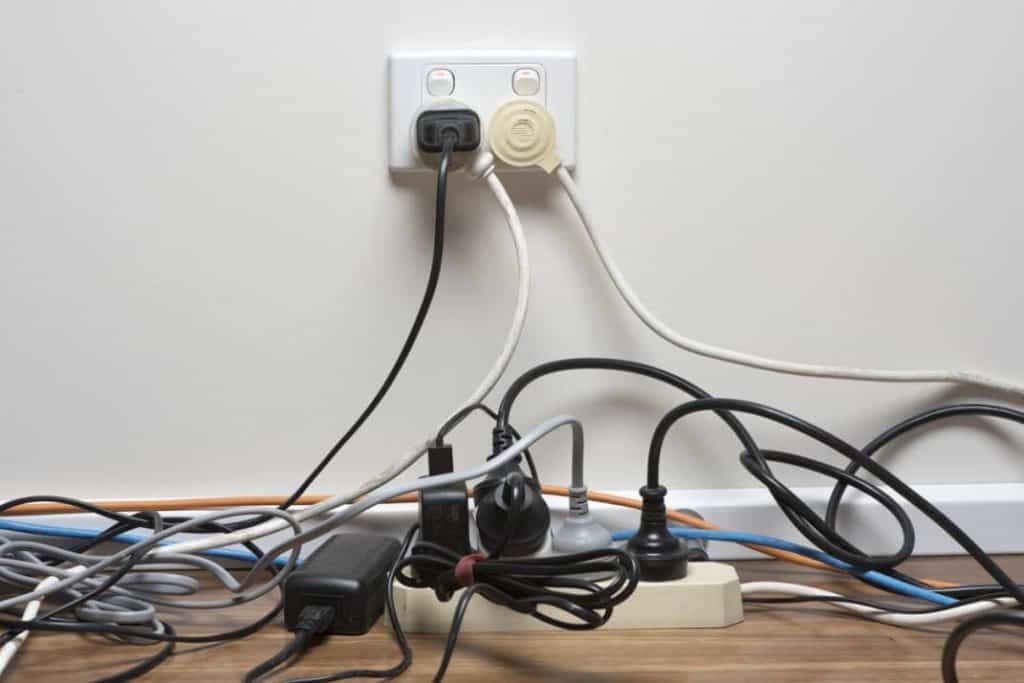
A short-term solution for an overloaded circuit is simple — shift some devices from the overloaded circuit to another general purpose circuit. Afterward, you can simply replace the fuse or flip the circuit breaker back on.
Could be another device (i.e. carbon monoxide sensor)
It may be that instead of your smoke detector, other appliances or devices, such as monitors, security system, or carbon monoxide alarms, are alerting you or have low batteries.
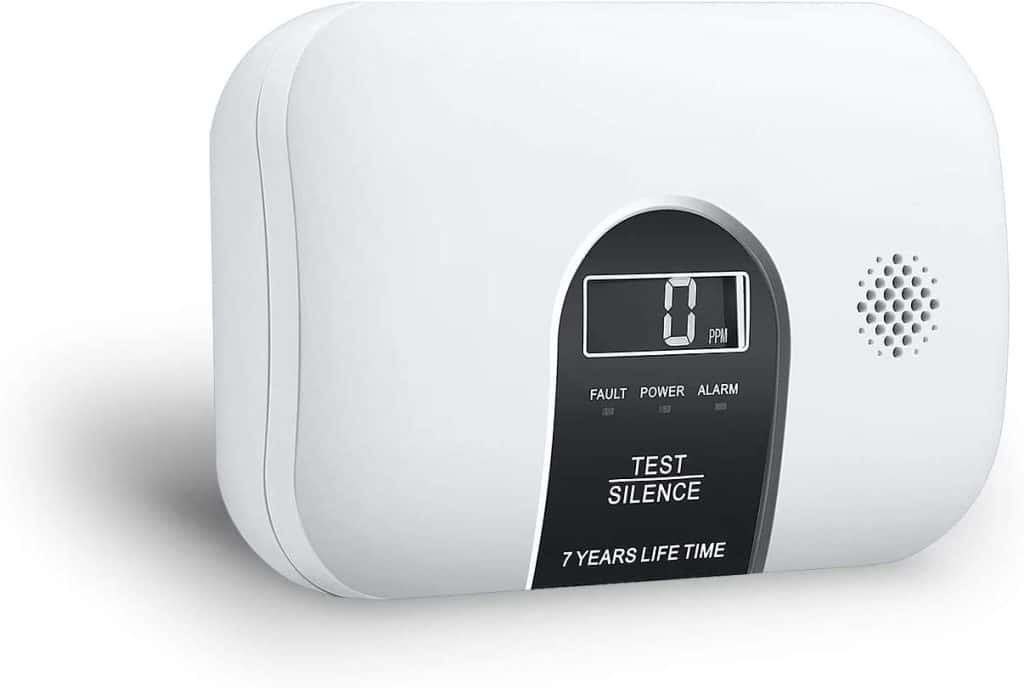
Temperature Fluctuations in the Home
Another reason for a chirping smoke alarm is temperature fluctuations in your home. If you’ve set the thermostat at a very high or low temperature, the smoke alarm will detect this and notify you. The chirping might be occurring due to the detection of hot air coming from the bathroom or kitchen.
This can occur if you leave the bathroom door open after taking a hot shower or if you’re cooking something at high heat. To prevent a false alarm, place the detector away from these rooms or find another way to make sure that the hot air doesn’t reach the unit vents.
End of Smoke Detector Life
Another common reason for the smoke detector beeping is that the unit has reached the end of its life. These devices usually last between eight to ten years. So, take down the unit and check the date of manufacturing mentioned at the back.
If it’s above eight years, you have to replace the device as soon as possible because the detector may not be as dependable as it once was.
Insufficient Battery Power
Does your smoke alarm go off whenever you turn on the AC power or install a new battery? It is normal for the smoke detector to go off and chirp for 5 to 10 seconds when you install a new battery or they are powered up.
If the alarm is still going off and there’s no smoke, it means that there is insufficient battery power. In this case, try another battery. Issues with voltage or insufficient electrical power can result in a continuous weak sounding alarm. When it comes to hardwired devices, disconnect the power at the service panel for some time until the brownout is over.
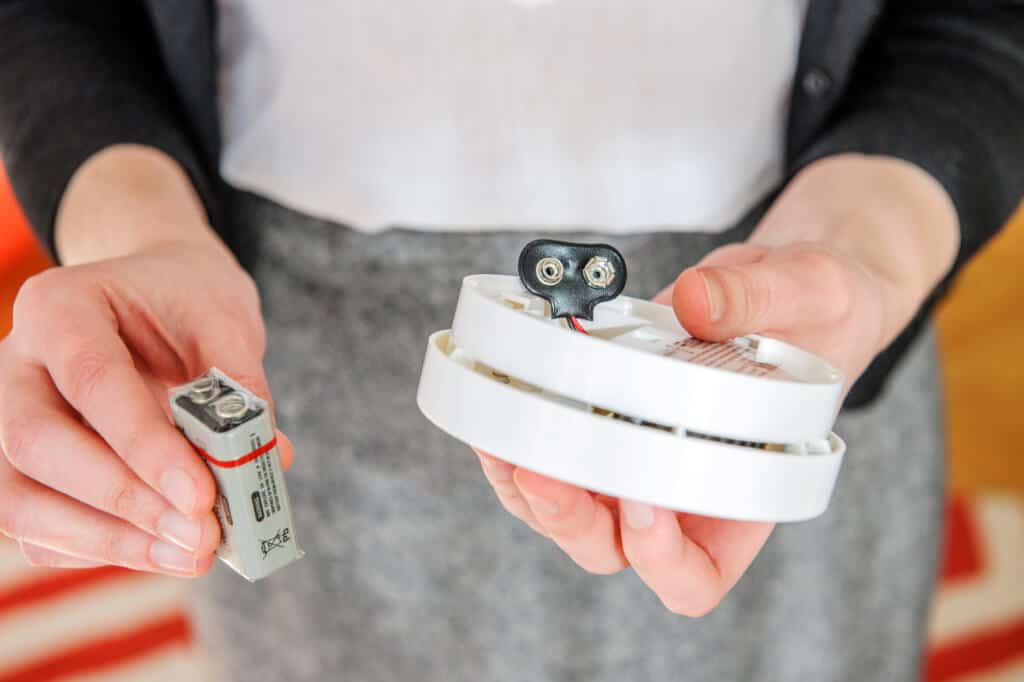
Incompatibility
If an incompatible secondary device or smoke detector is linked to a series of hardwired smoke detectors, it can lead to the system going off.
What do smoke alarm detector beeping noises mean?
Two categories of smoke detectors exist in the market — hardwired and battery-powered. The latter can be easily shifted or removed. But a hardwired smoke detector is wired into the home’s electrical system, which means it can’t be relocated easily.
Plus, when one hardwired smoke alarm goes off, the rest will follow suit. Regardless of what category you own, this section will translate the various beeping noises and explain what these mean.
Are you ready? Let’s start.
Single beep
Single beeps that occur at an interval of 30 seconds to 1 minute usually means that the battery in the device requires a replacement.
But it can also suggest other problems with the device. For instance, the unit has reached its end of its lifetime or there’s dust in the sensors.
Multiple beeps
Multiple beeps can signal different alarms or particular issues. For example, the device might be notifying you about carbon monoxide and employ various numbers of beeps.
A First Alert detector will chirp thrice on malfunction or 5 times upon reaching the end of lifetime. On the other hand, a Universal Security Alarm beeps twice, pauses for 3 seconds, and beeps twice again if one of the interconnected alarms recognizes smoke.
Therefore, check your smoke alarm chirping device manual to learn what each beep means, as it varies depending on the manufacturer.
A beep per minute is an indication of low battery. Other causes of multiple or irregular chirps include a partially open battery drawer, battery pull-tab in place, or wrong placement of batteries.
To resolve this problem, ensure that the placement of batteries is correct. If your batteries are dead, just replace them. As a general rule of thumb, batteries should be replaced twice a year.
Continuous beeps
If your alarm is emitting a series of continuous beeps, it means that it has detected smoke. If it’s a single alarm, the smoke is somewhere in the near vicinity of the device. In the case of an integrated detection system, the sound can result from any device in the home.
Sometimes, your smoke alarm could be beeping erratically due to airflow or temperature issues. Another reason can be its placement near the open window, ceiling fan, or HVAC vent.
If these or other causes are making the device too hot or too cold, a continuous beeping is possible. You should move it to another place.
Intermittent beeps
In case your smoke alarm is emitting 3 consistent beeps, or if the device is flashing red and beeps after 30 seconds, it can be an indication of a malfunctioning alarm.
The device might have expired and is in need of a replacement. Check whether it’s still under warranty to get a new model free of cost.
Loud and Fast Beeping
This noise is a universal indicator of a possible fire. Even if you don’t smell or see anything, it’s still worth it to check your home.
However, the chirping can occur due to accumulated heat — in case someone is cooking or smoking tobacco products. To prevent a false alarm, ensure that the device is 10 feet away from cooking appliances.
Troubleshooting A Chirping Smoke Alarm
The very first thing to do when a smoke detector starts chirping or beeping is to check if there is any actual smoke in your home. Fires that are difficult to locate are usually on the floors, inside the walls, or ceilings, or initiate inside devices or electrical outlets.
Occasionally, running the back of your hand on the surface of the ceiling or wall can reveal where the possible fire is hiding. However, if you suspect that there is a fire inside the wall, don’t try to access and extinguish it. Immediately call the fire department and evacuate everyone from your home.
Once you have made sure that there is no smoke, it is critical to silence that incessant chirping. The loud beeping is very off-putting and stops the family members from working or thinking clearly.
Three out of five home fire incidents happen due to malfunctioning smoke detectors, as per the National Fire Protection Agency. The cause can vary from a chimney fire, an electrical fire, or a variety of other horrific scenarios.
This is why the agency suggests a functioning smoke alarm outside a bedroom and on all floors of a home, including the basement.
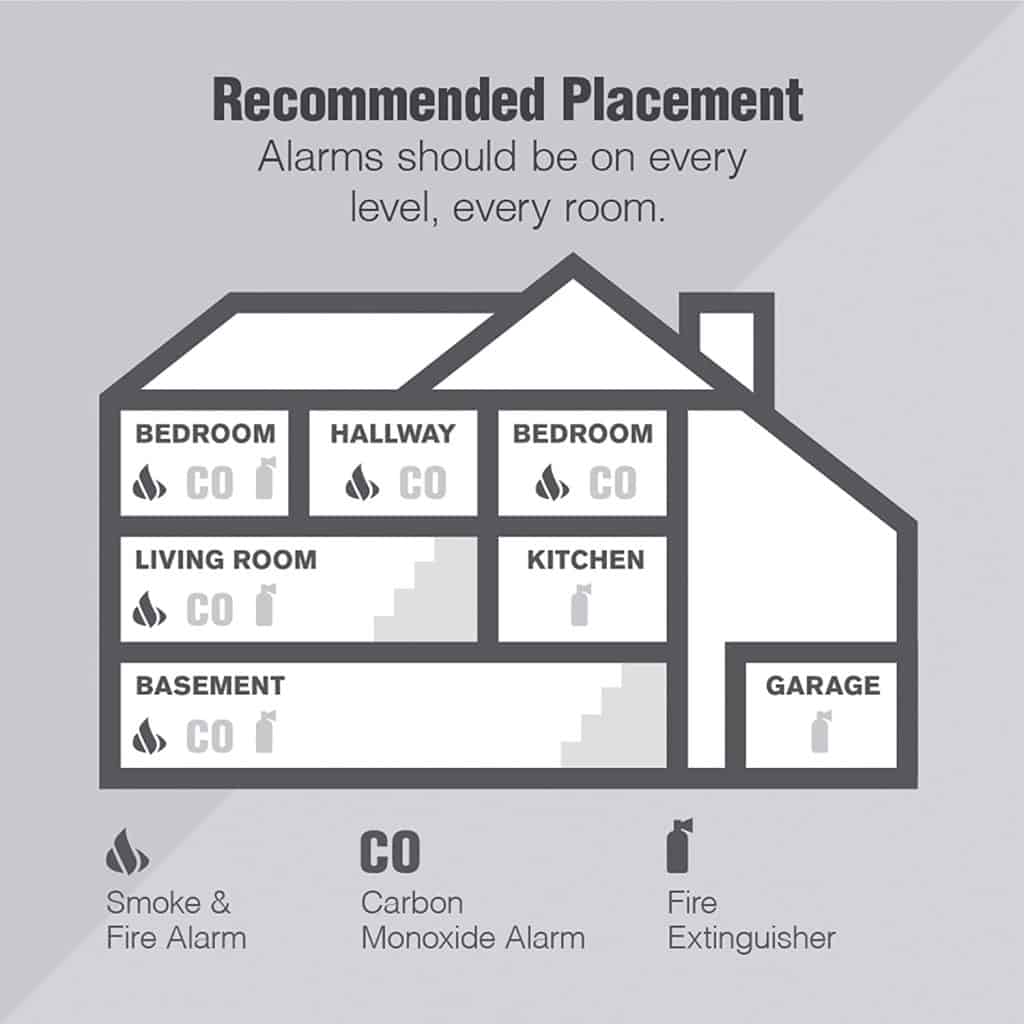
Why is your smoke detector beeping? The beep is usually a result of some problems related to wrong wiring or battery. But don’t confuse a chirp with an intermittent alarm.
An intermittent alarm is a low-pitched random sound for some seconds, whereas a chirp is a high-pitched sound that comes in equal intervals about once per minute.
Now, it’s time to finally talk about the helpful troubleshooting steps to erase this frustrating issue.
Perform a test
To execute a test on your smoke detector, press and hold down the test button. This will require a few seconds to initiate, but an ear-piercing siren will emit from the model when you press that button. But if the sound is absent or weak, replace the batteries.
Need a step-by-step visual guide? This YouTube tutorial will help you:
Reset the smoke alarm
When you change the batteries of the detector, a residual charge can remain inside. This residual charge can result in periodic beeping in the smoke detector.
So, it’s a good idea to reset your unit. This process drains the residual charge. The steps differ for hardwired and battery-powered devices.
Battery operated alarms
There are just three steps for these models:
- Discard the batteries.
- Press the test button and hold it for 15 seconds.
- Replace or insert the batteries again.
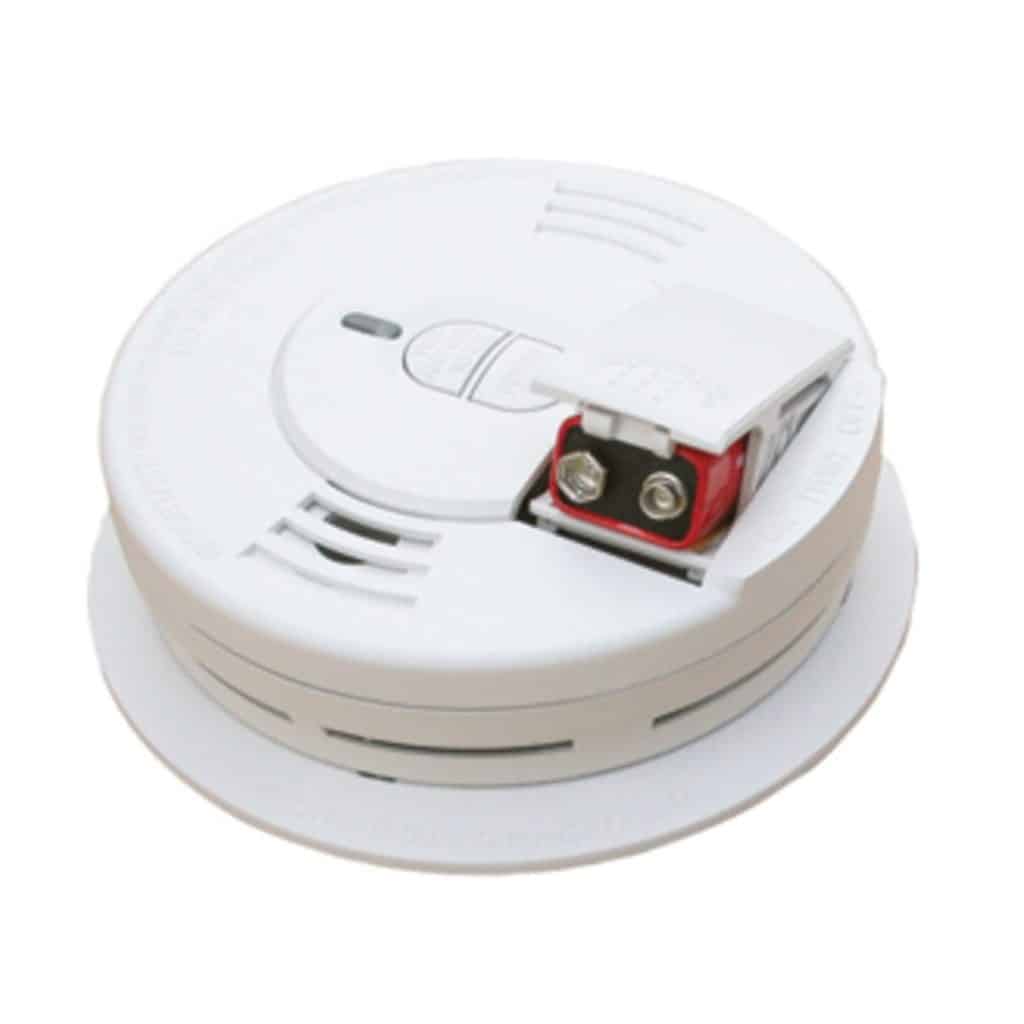
Wired alarms
Hardwired devices usually have backup batteries that require occasional replacement. Below are the steps:
- Shut off the home’s main power breaker.
- Disconnect the detector’s power cable.
- Take the unit down.
- Discard the backup battery.
- Hold down the test button for 15 seconds to eliminate residual charge.
- Replace or insert the backup battery again.
- Reconnect the unit to the power cable.
- Replace the unit on the wall/ceiling.
- Turn on the home’s main power breaker.
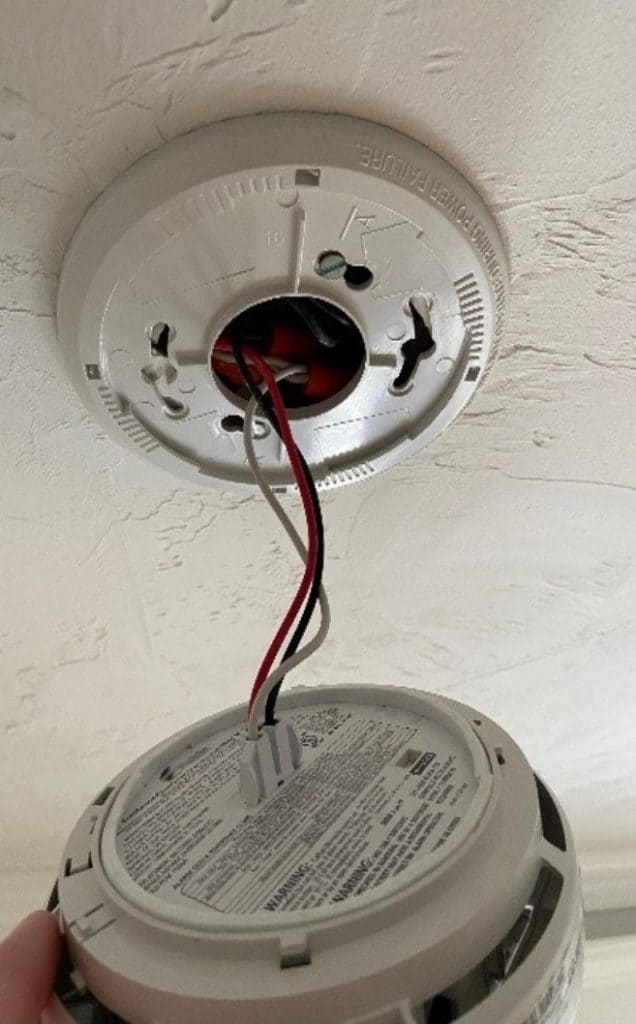
Turn off silent mode
Does your smoke detector have a dedicated silent push button? If yes, this button could have been pressed by mistake. In this case, beeping will occur once every minute for at least 15 minutes.
So, turn off this silent mode.
Replace smoke alarm
Unfortunately, if none of the above-mentioned fixes have worked in your favor, it might mean that your model has reached the end of its lifetime or is permanently damaged. In either case, replace the device!
Press the Silence Button
There is a temporary solution that you can execute for a quick fix.
- Head over to the beeping smoke detector.
- Set a ladder that will enable comfortable and safe access to the device.
- Press the Silence/Test button on the front of the unit.
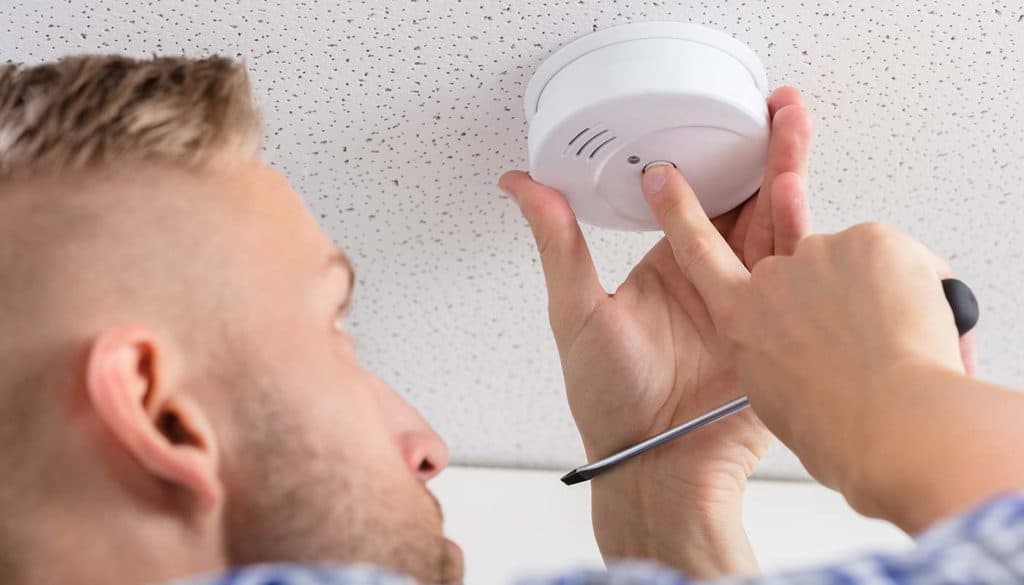
But if the device is still chirping, consider removing the unit altogether until you can figure out the cause. Here’s how you can remove it:
- Hold the unit and firmly turn it counterclockwise until it is loose from the base.
- Open the battery compartment at the back of the unit.
- Discard the batteries.
- When it comes to hardwired devices, utilize a screwdriver to unscrew the screws holding the alarm wires and discard them from the unit. These are low voltage lines, but make sure to not touch the exposed copper ends.
But since it is highly unsafe to leave a disabled smoke alarm, search for a proper, permanent solution to the problem.
Clear the Residual Charge
Is the smoke detector beeping even after replacing the batteries? It’s a good idea to clear the residual charge.
- Take down the detector and open the cover where the batteries are located.
- Press and hold down the test button for 15 to 30 seconds to eliminate the residual charge and reset the unit.
- Clean the battery compartment with a microfiber cloth before inserting the batteries again.
- Press the test button again.
- Once you hear the loud beep, it means you’re good to go.
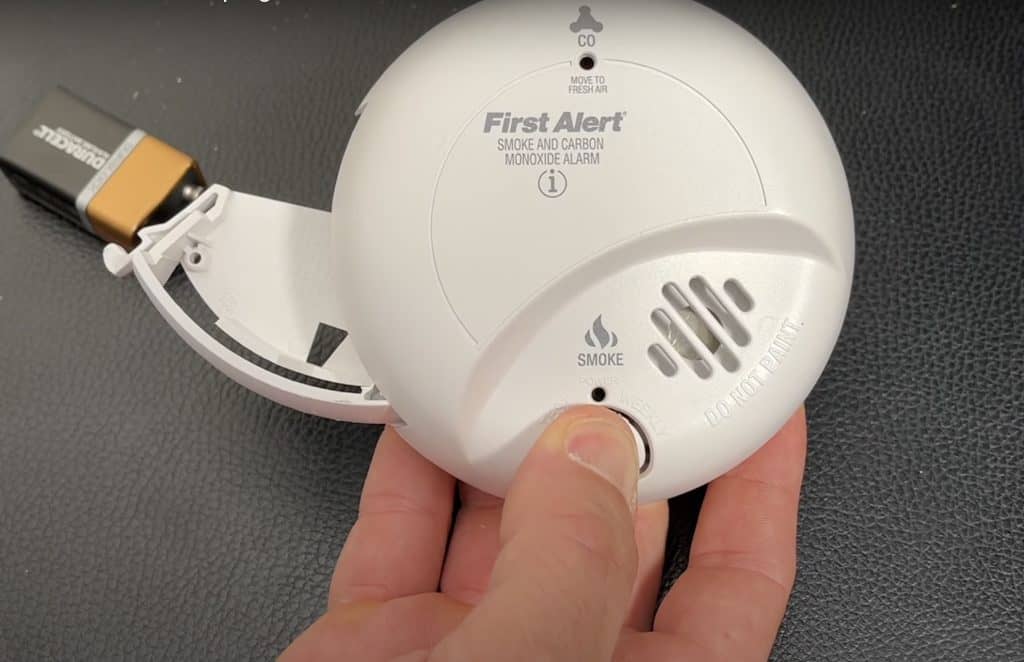
If you don’t hear any loud beep, replace the unit altogether.
Change the Batteries
As previously mentioned, a common culprit behind the smoke detector beeping is malfunctioning batteries. Replacing the battery is a straightforward process with the following few steps:
- Remove the battery cover. Some pop off, others twist off, and others have screws.
- Remove the depleted battery.
- Check that the negative and positive labels of the battery are matching with the device.
- Insert the new batteries.
- Use the test button to make sure that the device is operating.
That’s it!
Clean Dust From the Device
Dust causes smoke alarms to chirp. If dust settles on the sensors, it will hinder normal functioning. It can also interfere with the battery connection.
So, make a habit of cleaning the device after every 6 months. The below methods are recommended.
Using a wipe
With wipes, one can clean the external parts of the unit (outer case), including the vents. Commercial wipes are practical, but you can make your personal one with a soft, clean cloth and a mild detergent.
Using a vacuum cleaner
Discard the faceplate from the unit and utilize a soft brush attachment to remove any dirt. Be gentle while doing so.
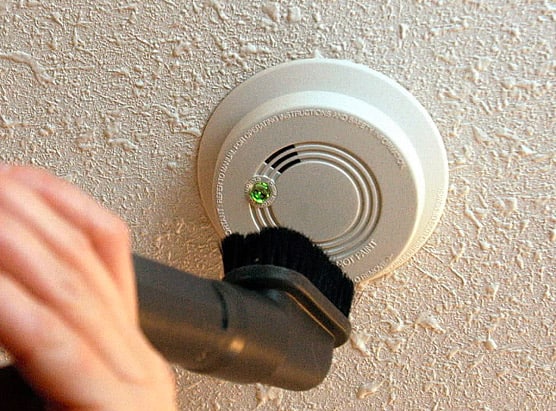
Using compressed air
This is a useful tool for eliminating dust from the places the above two tools can’t reach. A blast of compressed air on a monthly basis can keep the dust at bay.
Proactive alarm maintenance can resolve most of these issues. Ensure you clean your device and replace the batteries regularly.
Frequently Asked Questions
What is the normal lifespan of a smoke detector?
As per the US Fire Administration, the majority of smoke detectors have a lifetime of 8-10 years. After this, the alarm should be replaced.
How long does it take for a smoke detector to stop chirping?
Even when the battery is dead, the device could have a residual charge that will maintain the beeping for at least a week. In order to stop the chirping after removing the battery, you need to drain the residual charge by pressing the test button for 15 seconds.
Conclusion
There are many ways to shield yourself from a fire in the house. Smoke detectors act as the first line of defense. This device can literally save your life. But there are many reports of smoke alarms chirping occasionally, and it’s natural to get annoyed with this issue.
But instead of just disconnecting the device or discarding the batteries, use our guide to diagnose the culprit and resolve the situation. This way, your smoke detector will function properly and do its job.
What was the problem with your alarm and how did you sort it out? Feel free to share with us in the comments below. Thank you for reading!